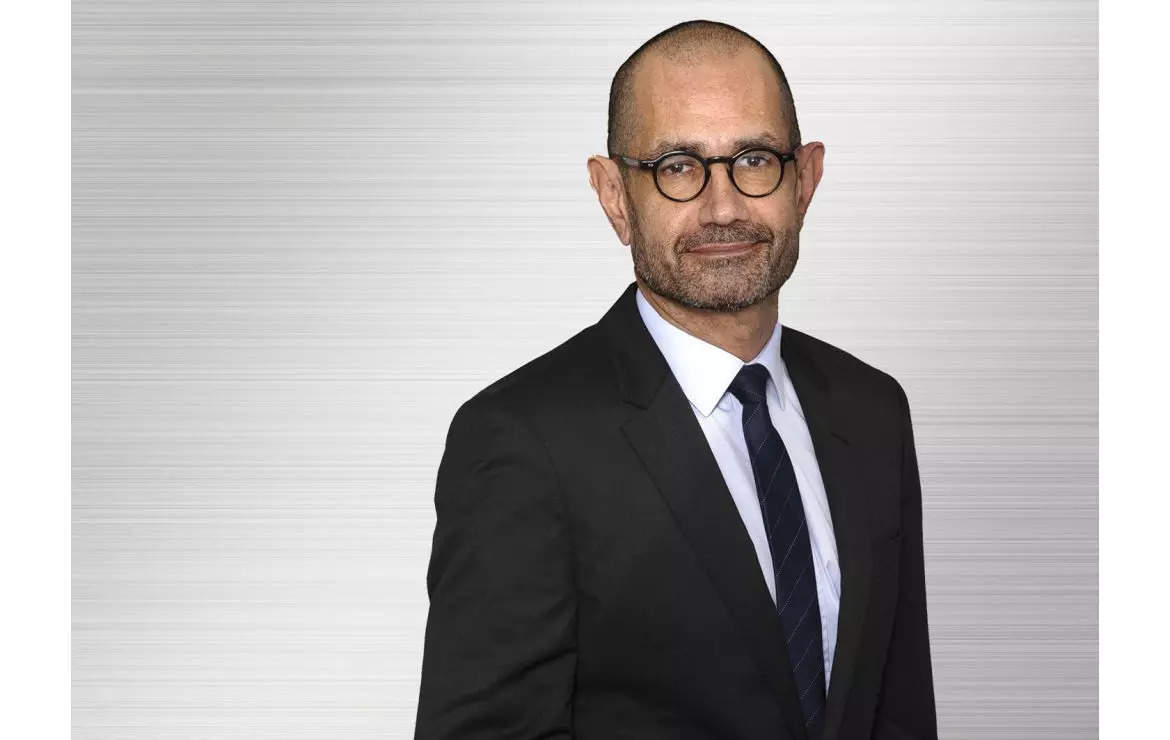
Q. Citroen has made a mark in the Indian market during a challenging time. What is your expectation plans for your latest product in India?
Yes, we have great expectations for the Indian market. Our latest product, the midsize SUV C3 Aircross, is a great addition to the market. It is important for us to be present in the Indian market with products that cater to the heart of the market and other segments. This is our second product in India, with another one coming next year. We want to become one of the big players in these segments.
India is one of the three key pillars we have outside of Europe, along with Latin America and the Middle East and Africa. India is probably the most promising one because of its size and growth potential. With the Indian market expected to account for 5 million vehicles, there are many opportunities for us. Citroen is pleased to be present in India and leading the strategy for the C3 Aircross in India. So, India is a key part of our strategy outside of Europe.
Q. The segment you are entering with the Citroen C3 Aircross is already quite cluttered. Do you think it’s a late entry, and what advantages does your product have over the others in this segment?
Well, it’s true that this is a very competitive segment, and we know that there are already some good competitors out there. However, we believe that we have some unique propositions to offer to the market. Our focus is on providing the best driving experience, with features such as comfort, roominess, power, and agility of the engine. Additionally, we will be the only ones in the segment to offer a five plus two seat, allowing for seven people to be carried in the vehicle, which is unique in this segment. We believe that the Citroen C3 Aircross has key advantages over the competition in terms of comfort, roominess, and agility, and we want people to experience it for themselves.Q. Moving on to the distribution of the product, you have only limited reach in terms of showrooms and physical locations, with the competition being quite aggressive in that aspect. What is your approach towards this and how do you plan to increase your numbers in this mass volume segment with 30,000 units a month?
Our goal is to become one of the top players in the segment, and this is based on the product and our distribution expansion. We currently have 30 dealers and want to start with steady growth, ensuring that all the dealers we put in place do healthy business and are profitable. When we introduce the second car, we plan to extend the number of dealers to more than double before the end of this year. We will have over 60 dealers soon after launching this, which will help sustain the C 3 Aircross and also increase the sales of the C three.
I understand that we have a limited distribution footprint today, but that will change over the years. In 2024, we will have even more dealers as we introduce another vehicle.
Q. How satisfied are you with the response that you have got in the Indian market so far? What kind of growth potential do you see in India compared to some of your other key international markets?
We are very much in line with our expectations in terms of C3 and E-C3 sales, with more than 9,000 sales since the beginning. This is in line with what we had planned and in line with the 30 dealers that we have.
We are growing our strategy in a steady and progressive way. Europe and North America markets are mature markets and not progressing anymore. In India, however, the market still has a lot of potential to grow. As a newcomer, we are gaining market share in a growing market. The perspective of volume growth in India is very good compared to other markets.
Even though the volume in India today is lower than in other regions, the prospects for growth is high.
Q. Apart from sales in the Indian market, you have also put in place a lot of infrastructure to deepen localisation, including a vendor base. In terms of exports, both for vehicles as well as components, what potential do you see in India?
There is great potential. As you know, we already export some components such as gearboxes, and in terms of vehicles, we have started exporting to some Asian and African countries. This is very much part of our strategy, simply because the production base is so competitive in India that it could be a great opportunity for us to export. So while we count on the Indian market, which is a big market, we also have great expectations in terms of exporting to many countries, as we have already started doing. It is very much part of our strategy.
Q. Do you see India taking on a bigger role as Europe is moving to electric in the next decade, while India’s transition may be delayed? Do you see opportunities for the Indian manufacturing base to be a hub for supplying ICE (internal combustion engine) related vehicles to some of your other key international markets?
Well, as I said, we already produce gearboxes. For engines, we will obviously see what we can do. But it’s true that probably in Europe and North America, ICE volume is going down because electrification is going up and the size of the global market is stable. Whereas in India, we will probably see the number of ICE vehicles continuing to grow, even if the share of electric vehicles will also grow. But as the size of the market is expanding, we will see ICE volume growing. So yes, it is likely that India will become a big volume maker for ICE engines in the future. We will see what we can do with that, but it will certainly be a strong industrial base for components as well.
Q. At present, you have a market share of less than 1%. How do you see the market doing, and what problems do you foresee in the next five years?
We don’t communicate figures but what I can say is that we currently have one car and 30 dealers. Soon, we will have two cars and 60 dealers, and when we present the third one next year, we will have three cars and 100 dealers. You can make the calculations yourself, but growth is related to more products and models. We also have plants with a capacity of 100,000 vehicles that we can scale up if needed, but in the short term, we can follow the growth of our sales without any issues. We tend to grow in India thanks to more products and models.
Q. In the first phase, you localized the platform and invested EUR 100 million in the CQ platform for three products, the third of which is coming next year. Have you started planning for the next few years? If you could share some details, such as whether you are considering fresh investments in the Indian market?
Our priority is first to launch C3 Aircross, then go for the next product. With three products at the core of the main segments, we will cover the market. We are also on top of that, sci-fi and the cross. We started with sci-fi and cross because we wanted to give an image to the brand as a top of the range vehicle. This is our current plan. After that, we are preparing our long-term product plan, but it’s early days. We don’t have anything to say on that, but we are obviously planning ahead. What matters is our commitment to the Indian market, which means that we entered the market to stay, grow, and become a key player in the Indian market. That’s our strategy.
Q. Can you tell us about the R&D base since you have localized this product about 90% and the vendor base? How much is being spent there, and what kind of contribution does it make to the global product portfolio?
Well, first of all, these products have been completely designed and engineered in India. We did the same with the participation of Latin America because we wanted to have products specifically designed for the local market. Even though we are launching this car in India, we are also launching it in Latin America at the same time.
The product is not exactly the same one because it has been completely adapted to the local needs. It is very important that we engineer and design the product in the region because this is a way to meet the demand of the Indian market. After that, the platform is great and can sell a lot, enabling the expansion of Citroen everywhere. So, it’s a good starting point for the global expansion of the brand.
Q. Many automakers are ramping up their tech capabilities in India making use of the talent here, and the unique opportunities on the cost front. Is that something that you’re considering as well?
What I can say is that the skills that we have in India are absolutely great. Our Indian team is perfectly capable of designing and engineering a whole car, which is not always the case when you have engineering centres in other regions. This is a great asset that we have, and we have an extremely skilled engineering team that could contribute to any work needed by Citroen.















